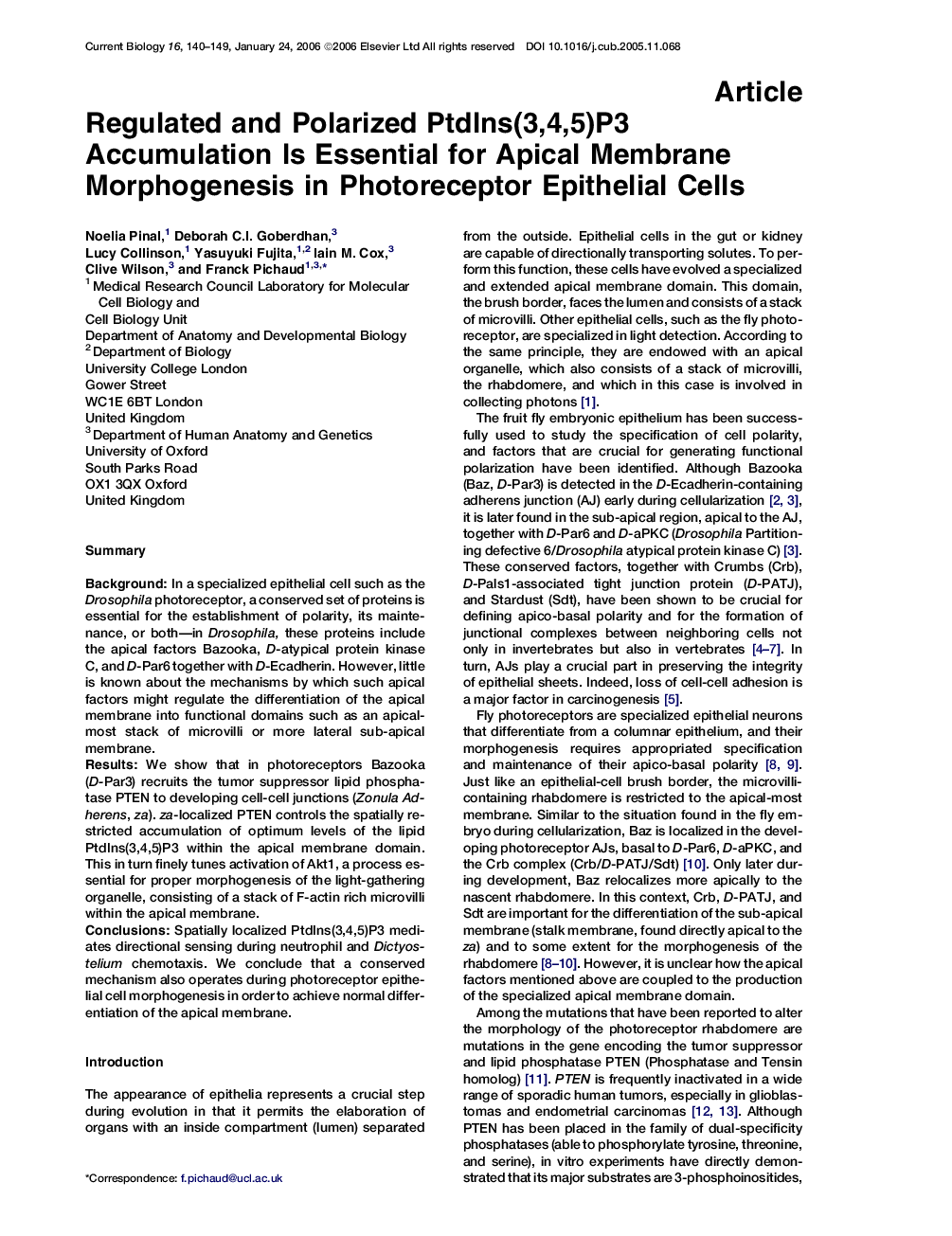| Article ID | Journal | Published Year | Pages | File Type |
|---|---|---|---|---|
| 2044811 | Current Biology | 2006 | 10 Pages |
SummaryBackgroundIn a specialized epithelial cell such as the Drosophila photoreceptor, a conserved set of proteins is essential for the establishment of polarity, its maintenance, or both—in Drosophila, these proteins include the apical factors Bazooka, D-atypical protein kinase C, and D-Par6 together with D-Ecadherin. However, little is known about the mechanisms by which such apical factors might regulate the differentiation of the apical membrane into functional domains such as an apical-most stack of microvilli or more lateral sub-apical membrane.ResultsWe show that in photoreceptors Bazooka (D-Par3) recruits the tumor suppressor lipid phosphatase PTEN to developing cell-cell junctions (Zonula Adherens, za). za-localized PTEN controls the spatially restricted accumulation of optimum levels of the lipid PtdIns(3,4,5)P3 within the apical membrane domain. This in turn finely tunes activation of Akt1, a process essential for proper morphogenesis of the light-gathering organelle, consisting of a stack of F-actin rich microvilli within the apical membrane.ConclusionsSpatially localized PtdIns(3,4,5)P3 mediates directional sensing during neutrophil and Dictyostelium chemotaxis. We conclude that a conserved mechanism also operates during photoreceptor epithelial cell morphogenesis in order to achieve normal differentiation of the apical membrane.
